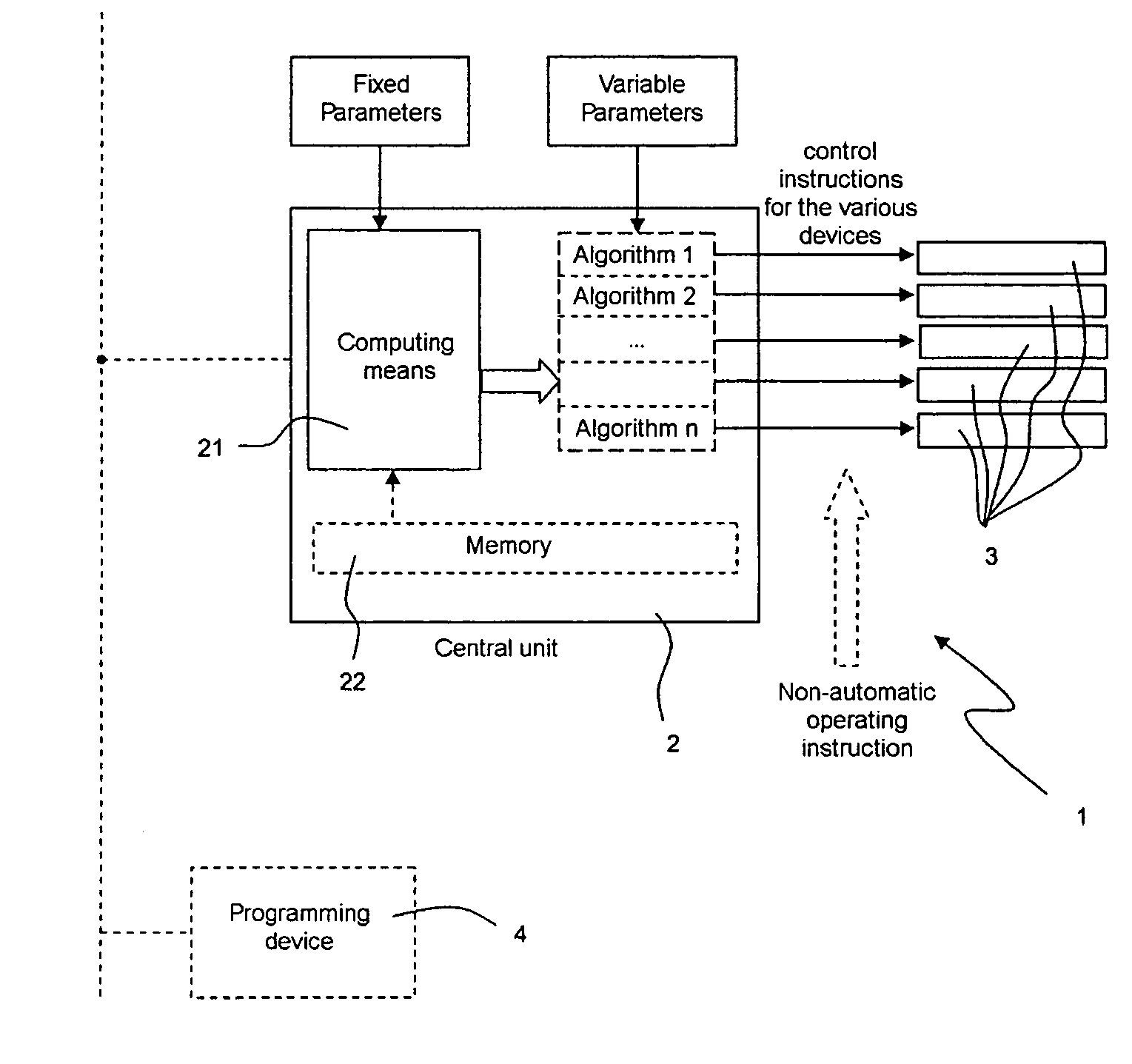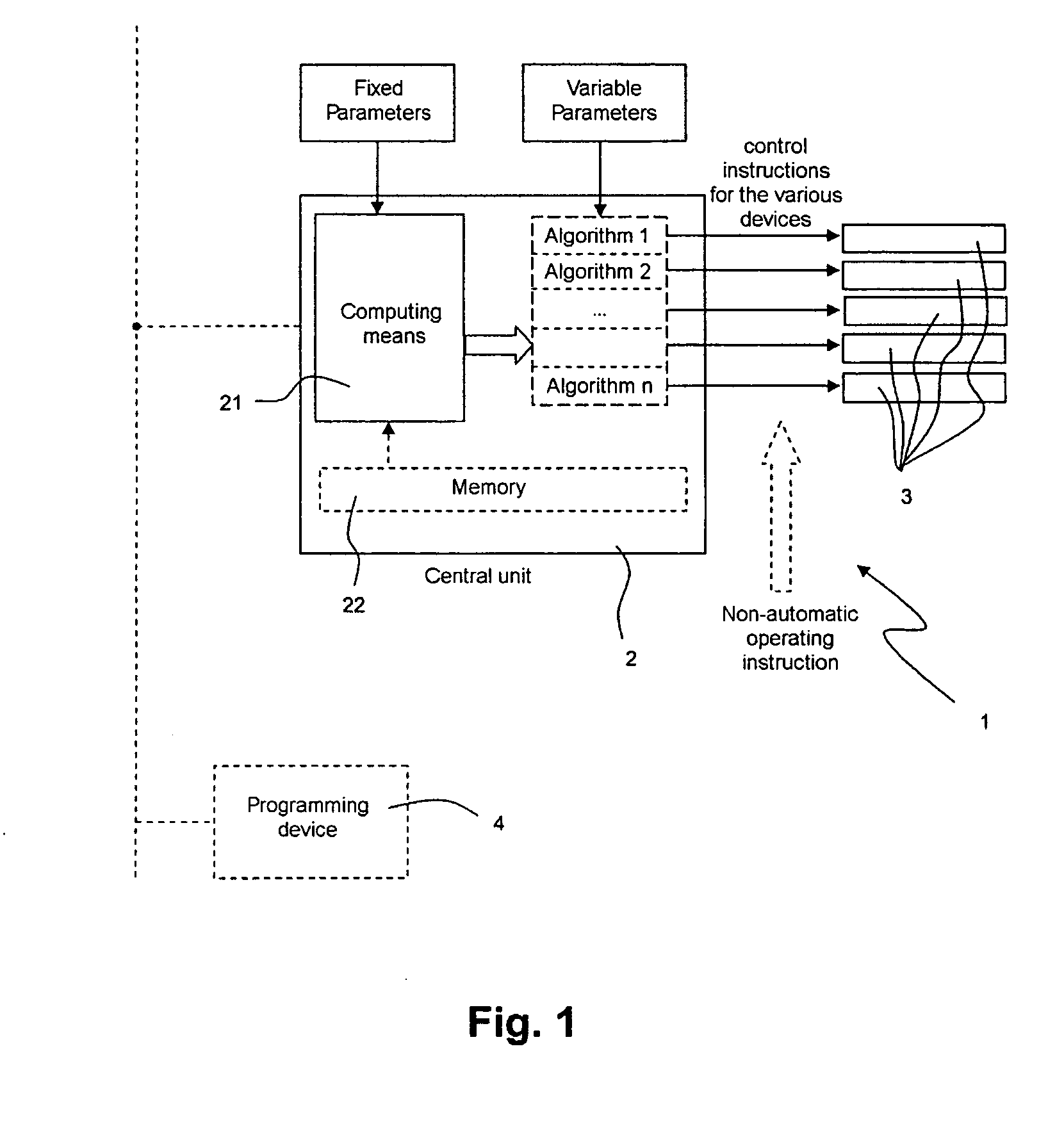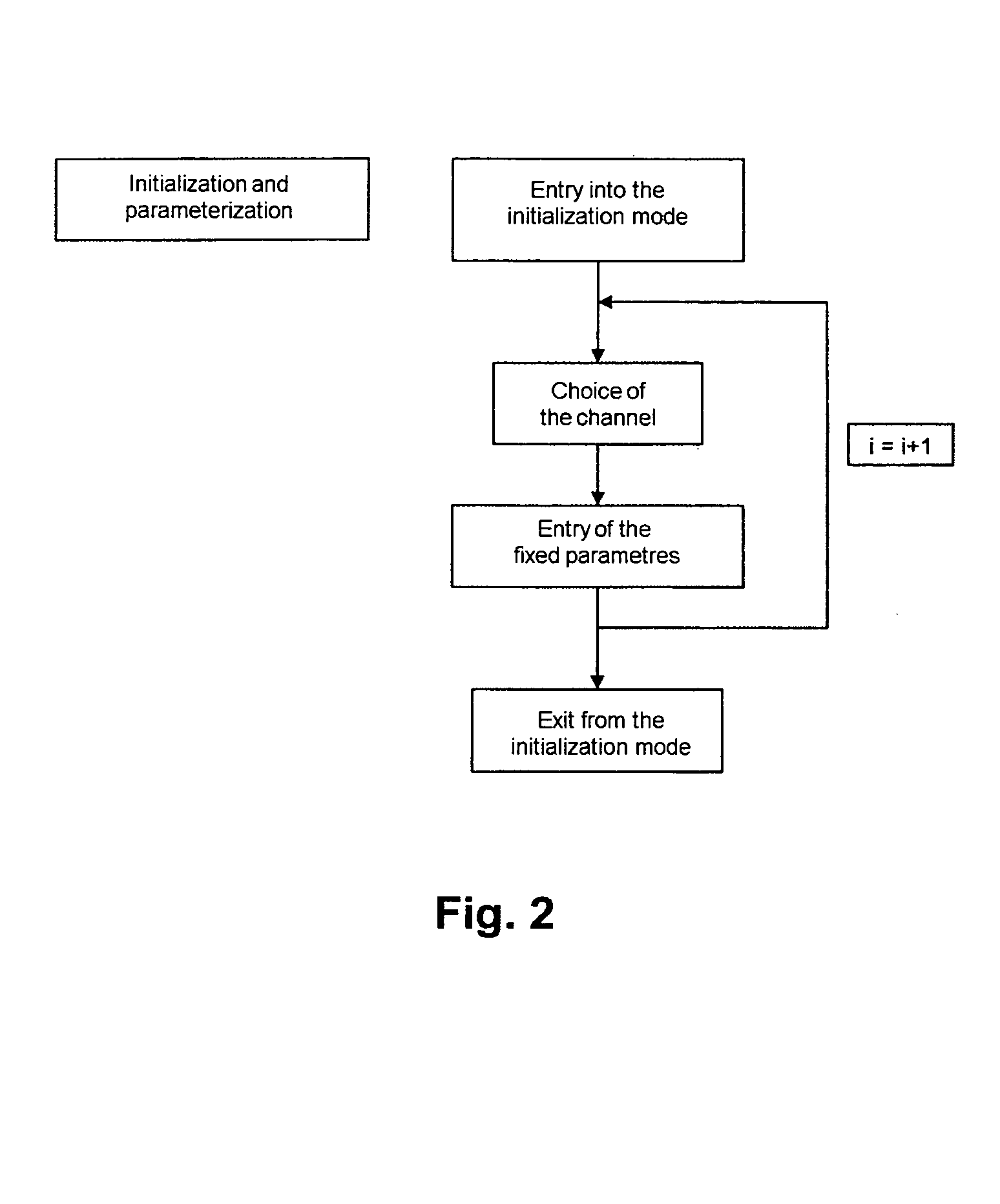Configuration method for an installation comprising solar protection and/or lighting devices
- Summary
- Abstract
- Description
- Claims
- Application Information
AI Technical Summary
Benefits of technology
Problems solved by technology
Method used
Image
Examples
Embodiment Construction
[0050]The installation shown in FIG. 1 comprises a central control unit 2 controlling motorized solar protection devices 3 equipping the openings of a building. They could also be lighting devices for rooms of the building provided with such openings. The central unit can be connected by a bus line, possibly in a network with other similar central control units.
[0051]The central control unit 2 can be configured directly or by the intermediary of a programming device 4, such as a computer. In the first case, the control system has a screen and an interface of the keyboard type upon which the data necessary for the operation of the installation is entered.
[0052]The central control unit 2 comprises computing means 21 such as a microprocessor and possibly a memory 22.
[0053]The installation receives on the one hand fixed parameters, during an initialization phase. These fixed parameters are of immutable nature, at least until modification of the characteristics of the solar protection an...
PUM
 Login to View More
Login to View More Abstract
Description
Claims
Application Information
 Login to View More
Login to View More - R&D
- Intellectual Property
- Life Sciences
- Materials
- Tech Scout
- Unparalleled Data Quality
- Higher Quality Content
- 60% Fewer Hallucinations
Browse by: Latest US Patents, China's latest patents, Technical Efficacy Thesaurus, Application Domain, Technology Topic, Popular Technical Reports.
© 2025 PatSnap. All rights reserved.Legal|Privacy policy|Modern Slavery Act Transparency Statement|Sitemap|About US| Contact US: help@patsnap.com



